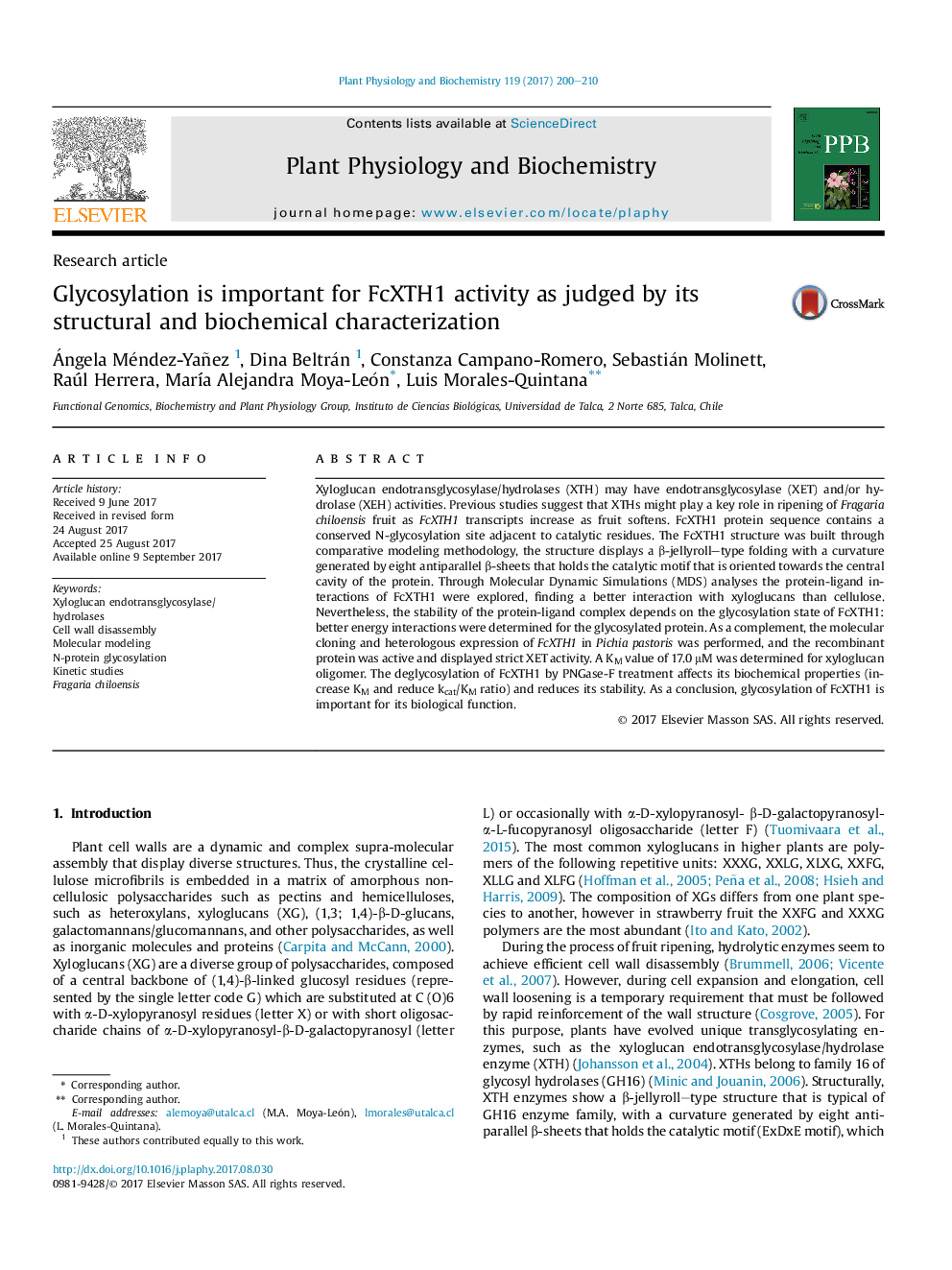| Article ID | Journal | Published Year | Pages | File Type |
|---|---|---|---|---|
| 5515304 | Plant Physiology and Biochemistry | 2017 | 11 Pages |
â¢FcXTH1 structural model displays a β-jellyroll-type folding.â¢FcXTH1 protein contains a N-glycosylation site adjacent to catalytic residues.â¢The recombinant protein was active and displayed strict XET activity.â¢FcXTH1-deglycosylated showed an increased KM and reduced kcat/KM.
Xyloglucan endotransglycosylase/hydrolases (XTH) may have endotransglycosylase (XET) and/or hydrolase (XEH) activities. Previous studies suggest that XTHs might play a key role in ripening of Fragaria chiloensis fruit as FcXTH1 transcripts increase as fruit softens. FcXTH1 protein sequence contains a conserved N-glycosylation site adjacent to catalytic residues. The FcXTH1 structure was built through comparative modeling methodology, the structure displays a β-jellyroll-type folding with a curvature generated by eight antiparallel β-sheets that holds the catalytic motif that is oriented towards the central cavity of the protein. Through Molecular Dynamic Simulations (MDS) analyses the protein-ligand interactions of FcXTH1 were explored, finding a better interaction with xyloglucans than cellulose. Nevertheless, the stability of the protein-ligand complex depends on the glycosylation state of FcXTH1: better energy interactions were determined for the glycosylated protein. As a complement, the molecular cloning and heterologous expression of FcXTH1 in Pichia pastoris was performed, and the recombinant protein was active and displayed strict XET activity. A KM value of 17.0 μM was determined for xyloglucan oligomer. The deglycosylation of FcXTH1 by PNGase-F treatment affects its biochemical properties (increase KM and reduce kcat/KM ratio) and reduces its stability. As a conclusion, glycosylation of FcXTH1 is important for its biological function.
Graphical abstractDownload high-res image (203KB)Download full-size image
